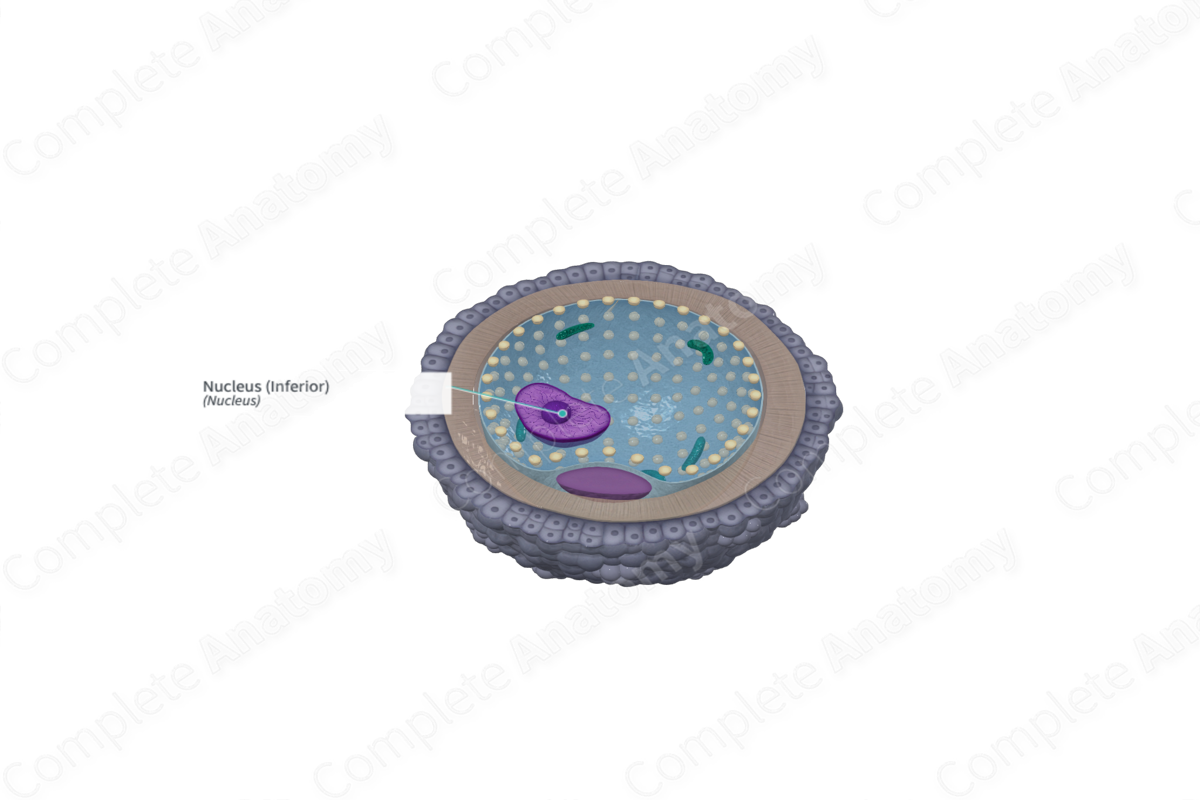
Quick Facts
The nucleus is a spheroid body within a eukaryotic cell, separated from the cytoplasm by the nuclear envelope, and containing chromatin, a nucleolus, and nucleoplasm. In the nucleus, the cell's genetic information is stored on the chromosomes and RNA transcription and processing occur (Dorland, 2011).
Related parts of the anatomy
Structure
The oocyte nucleus, or germinal vesicle, is a prominent feature of the secondary oocyte and houses the genetic information of the cell. The nucleus is surrounded by a nuclear membrane containing nuclear pores that serve as a functional continuum between the nucleus and the cytoplasm. The nucleus also contains prominent nucleoli (the site of ribosomal RNA transcription, processing, and assembly of ribosomes) and chromatin (either condensed heterochromatin or diffuse euchromatin) (Plant and Zeleznik, 2014).
If fertilization occurs, the secondary oocyte completes meiosis II, creating a mature ovum and a second polar body. The nucleus is now known as the female pronucleus. A third polar body may also be observed if the first polar body undergoes meiosis II.
During fertilization, the plasma membrane of the oocyte fuses with that of the sperm and the nucleus and centriole of the sperm enters the cytoplasm of the oocyte. Nuclei of the oocyte and sperm gravitate towards each other; the male nucleus becomes swollen and forms the male pronucleus. Prior to fusion, each pronucleus duplicates its DNA and split in a normal mitotic division. Half the DNA from the female and male move to opposite poles, with a deep furrow developing and dividing the cytoplasm in two. This establishes a two-cell stage zygote, with a diploid number of chromosomes (Sadler, 2011).
Key Features/Anatomical Relations
The nucleus lies within the cytoplasm of the cell, occupying a central position. The nucleus is surrounded by the nuclear membrane, which essentially demarcates the nucleus from the rest of the cell organelles.
Function
The oocyte nucleus carries the maternal DNA. The primary oocyte nucleus has 46 chromosomes (diploid), while the secondary oocyte has 23 chromosomes (haploid). Like the nucleus in other somatic cells, the nucleus of the oocyte has a variety of functions within a cell, including chromatin organization, DNA replication, and gene expression. These functions are facilitated by the nuclear matrix.
List of Clinical Correlates
- Infertility
- Trisomy
- Monosomy
- Nondisjunction
References
Dorland, W. (2011) Dorland's Illustrated Medical Dictionary. 32nd edn. Philadelphia, USA: Elsevier Saunders.
Plant, T. M. and Zeleznik, A. J. (2014) Knobil and Neill's Physiology of Reproduction. Elsevier Science.
Sadler, T. W. (2011) Langman's Medical Embryology. Wolters Kluwer Health.
